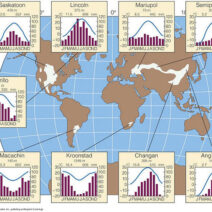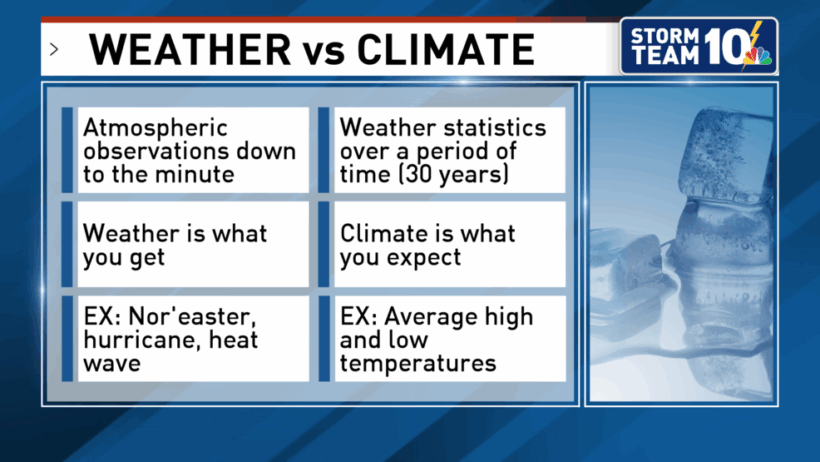The discourse surrounding climate and weather is often riddled with confusion, yet understanding the distinction is paramount in the realm of environmental science and personal awareness. While both terms pertain to atmospheric phenomena, they encapsulate vastly divergent concepts and implications. This article delves into the nuances separating weather and climate, offering clarity to those keen on comprehending our planet’s atmospheric systems.
The Essence of Weather: Temporary Atmospheric Conditions
Weather encapsulates the short-term atmospheric conditions in a particular region at a specific moment. It is characterized by variable elements such as temperature, humidity, precipitation, wind velocity, and atmospheric pressure. Weather can change minute by minute, hour by hour. For instance, a sunlit day can swiftly morph into a torrential downpour, illustrating the transient nature of weather patterns. Meteorologists employ sophisticated tools and models to forecast weather, often relying on data from satellites, weather stations, and radar systems.
Weather-related terms are frequently used in everyday conversation. Phrases like “It’s a chilly day” or “A storm is approaching” refer to immediate conditions, making weather a relatable and lively subject. Weather forecasts help people prepare for their day, from choosing attire to planning events. Thus, an understanding of weather patterns is crucial not just for meteorologists but for individuals navigating their daily lives.
Climate: The Long-Term Patterns
In stark contrast, climate refers to the average atmospheric conditions of a region over an extended period, typically defined as 30 years or more. It encompasses the long-term trends that encompass temperature ranges, precipitation averages, and seasonal variation. Climate is less about the daily variations and more about overarching principles that govern the environment. For example, one might say that a region has a humid subtropical climate, characterized by hot summers and mild winters.
Climate data is crucial for various sectors including agriculture, urban planning, and disaster preparedness. Understanding the climate of a region informs decisions related to crop cycles, the construction of infrastructure resistant to weather extremes, and the management of resources to combat potential climatic crises. The study of paleoclimatology examines historical climate patterns to provide insights into Earth’s climatic shifts, crucial for understanding future trends.
The Interplay Between Weather and Climate
While weather and climate may seem dichotomous, they are inexorably linked. Weather is influenced by the climate of a region, while climate patterns can be affected by extreme or unusual weather events. For instance, a single severe snowstorm may not alter the overall climate classification of an area, but an unusual frequency of such storms could indicate a changing climate trend. This intricate relationship underscores the importance of recognizing both short-term and long-term atmospheric phenomena in comprehending environmental changes.
The Impacts of Climate Change on Weather
In recent decades, climate change has emerged as a pressing concern, significantly influencing weather patterns across the globe. Gradual alterations in climate, driven by human activity—such as the burning of fossil fuels and deforestation—have led to increased temperatures, unprecedented weather variations, and a surge in extreme weather events. This not only affects natural ecosystems but also poses a threat to human societies, impacting resource availability, health, and economic stability.
Climate change is often evidenced by phenomena such as erratic rainfall patterns, prolonged droughts, and intensified storms. The interplay between weather and climate becomes particularly evident in these scenarios. An understanding of this connection is vital for implementing actionable strategies to mitigate the effects of climate change and safeguard vulnerable communities.
The Role of Education and Awareness
Heightened awareness is essential in bridging the gap between understanding weather and climate. Education plays a crucial role in disseminating information about the differences, enabling individuals to interpret weather forecasts and recognize their implications in the context of longer-term climate trends. Educational institutions, governmental bodies, and non-profit organizations can collaborate to encourage resource-rich programs that reveal the dynamics of weather and climate, emphasizing the importance of sustainability practices.
Moreover, as individuals capture the essence of weather events and their broader climatic implications, they can cultivate a sense of responsibility towards environmental stewardship. Empowering communities with knowledge allows for more informed decisions about resource consumption and conservation practices, ultimately contributing to global efforts to combat climate change.
Conclusion: A Call to Action
The distinction between weather and climate is pivotal in today’s rapidly changing world. A nuanced understanding of both terminologies not only enhances public discourse but also fosters informed action toward environmental responsibility. Acknowledging the short-term variability of weather while recognizing the significance of long-term climate trends can inspire individuals and communities to engage in proactive measures to mitigate the impacts of climate change. Through education, awareness, and collective action, society can work towards a sustainable future, bridging the gap between immediate atmospheric phenomena and the overarching climatic shifts that shape our planet.







